Interview with Robert Moss
March 3rd, 2009
When I imagined doing the theme of "dreams" for the Creative Every Day Challenge, author, Robert Moss immediately came to mind. I'm so thrilled to be able to share this interview about dreaming and creativity with you!
My interest in dream imagery stems from the fact that my dreaming is quite vivid and I often get a lot of ideas for art there, but the typical dream interpretation books never made much sense to me. Robert Moss's book, Conscious Dreaming was recommended to me by CED participant, Kelly, who found me through a bit of synchronicity and my post about a lynx dream. I deeply resonated with Moss's discussion of dreams and finding the meaning in your own symbology.
Since deciding to contact Moss, his work has been turning up everywhere! An article by Moss was in a free magazine I just happened to pick up at the beginning of the month and then this week an acquaintance emailed me a link to a podcast interview with Moss that she thought I would enjoy. Synchronicities are an important topic in Moss's work and I love his discussions about them. I hope you enjoy this interview with Moss. Be sure to check out his website, his online dreaming courses, and his latest book, The Secret History of Dreaming.
LPK: Have you always been a vivid dreamer?
RM: In my early boyhood in my native Australia, my dreams got me through crises of illness and I had indelible dream visions of traveling to worlds beyond ordinary reality. I learned from Aboriginal friends that our personal dreams can be portals into the Dreamtime, the source of ancestral wisdom, creativity and healing. I did well in exams at school, in part because I used to dream exam questions ahead of time. I started keeping a dream journal in my teens and often turned my dreams into poems, drawings and paintings.
LPK: How does dreaming impact your creativity?
RM: My seven nonfiction books on dreaming and imagination have flowed almost seemlessly from my dreams. My dreams also give me scenes, plot ideas, characters and dialogue for my novels and sometimes the whole of a short story. Sometimes I wake (as Charles Dickens told a doctor he used to wake) with the sense of wave upon wave of words moving through me, and I write with these rhythms rather than from specific dream content. Even more than from sleep dreams, I find my creativity is released in in-between states of reverie, daydream and hypnagogia (between sleep and waking, or vice versa). These liminal states, as I suggest in The Secret History of Dreaming, have been the "solution state" in which creative breakthroughs have been made in many field - in science and invention as well as in literature and the arts.
LPK: Do you think there's a certain amount of playfulness involved in interpreting your dreams and experiences with synchronicity?
RM: At one of my first public lectures on these themes, a very earnest fellow asked, "Bottom line it for me - what is all this about?" I said, very distictly, "Remember to PLAY." And he wrote it down. I'm not sure he really got the point. We do our best work in a spirit of play, and my work as a teacher and writer is essentially to encourage people to play better games.
To harvest messages from dreams and coincidence, you need to develop a talent for resemblances - for noticing what looks like or sounds like something else. If you have an ear for puns, you'll pick up messages in a dream that others may miss. If you have a playful sense that the universe is alive, and that unseen forces may be at play around you and with you - giving you a secret handshake, or mussing your hair, or sometimes pushing you back - then you'll come alive to the great art of navigating by synchronicity.
LPK: I know people who say they do not dream or at least they don't remember their dreams. What suggestions do you have for people wanting to tap into their dreams?
RM: The new science of dreaming confirms that everyone dreams every night, in four to six cycles of REM sleep (when the eyes are moving under the lids) and in other sleep phases too. Anyone who says "I don't dream" is just saying "I don't remember".
If you want to break a dream drought, here's how to begin:
- Before you go to bed, write down an intention for the night. You might ask for guidance on something or simply say, “I want to have fun in my dreams and remember.” Make sure your intention has some juice. Don’t make dream recall one more chore to fit in with all the others.
- Having set your intention, make sure you have the means to honor it. Keep pen and paper (or a tape recorder) next to your bed so you are ready to record something when you wake up.
- Record something whenever you wake up, even if it’s at 3 a.m. Sometimes the dreams we most need to hear come visiting at rather anti-social hours, from the viewpoint of the little everyday mind.
- If you don’t remember a dream when you first wake up, laze in bed for a few minutes and see if something comes back. Wiggle around in the bed. Sometimes returning to the body posture we were in earlier in the night helps to bring back what we were dreaming when our bodies were arranged that way.
-If you still don’t have a dream, write something down anyway: whatever is in your awareness, including feelings and physical sensations. You are catching the residue of a dream even if the dream itself is gone. And as you do this, you are saying to the source of your dreams, “I’m listening. Talk to me.”
LPK: I love how you use synchronicity as guidance in your life. For those wanting to experience more of this kind of guidance, what would you recommend?
RM: You'll find lots of coincidence games, and Moss's Laws for Navigating by Synchronicity, in my book The Three "Only" Things. I'll just mention just one everyday game for now. Think about an issue in your life on which you need guidance. Get this clear and simple ("I would like guidance on......") and write it down. Then as you go about your day, be open to the idea that the first unusual or striking that enters your field of perception is a direct answer to you from the world. It may be the vanity plate on the car in front of you, or a snatch of conversation, or a deer on the road.
LPK: I dream paintings sometimes, but I often have trouble remembering them fully when I wake up. Do you have any tools for remembering dream images?
RM: I find that often dreams come back later in the day, especially under the shower or when an incident in waking life starts to call up a forgotten dream incident.
Remember you don't need to go to sleep in order to dream. You can enter dreaming from a quiet place of meditation, from the twilight zone between sleep and waking, or through shamanic drumming. You may want to check out my drumming CD, Wings for the Journey. You can take a favorite picture and use it as a personal dreamgate. Imagine yourself stepping behind that line of trees in the landscape painting, for example, and having an adventure on the other side. Or take a favorite piece of music and let yourself flow with it into a series of dreamlike scenes.
LPK: What are some of your favorite dream resources?
RM: The most important book on dreams you'll ever read is your own dream journal. I offer workshops and classes in dreaming and navigating by coincidence all over the map, and my events calendar is at my website www.mossdreams.com. I also have a lively blog, www.mossdreams.blogspot.com. I have published seven nonfiction books on Active Dreaming - my original approach to dream exploration and healing - starting with Conscious Dreaming and including, most recently, The Secret History of Dreaming, which describes how dreaming has been the secret engine in great lives and great events across all of human history. I have also produced a video workshop, The Way of the Dreamer (Psyche Productions) and an audio series Dream Gates: A Journey into Active Dreaming (Sounds True).
:::
Thank you, Robert for taking the time out of your busy schedule to share your dream wisdom with us! I hope that this interview has inspired you to get playful with your own dream imagery. Sweet dreams!
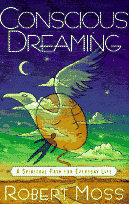
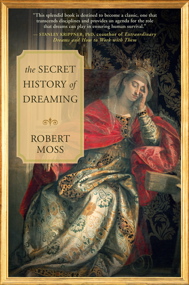

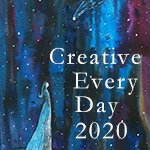

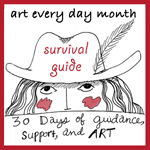
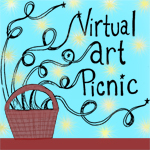



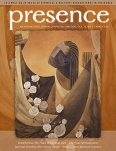




21 Responses
What a wonderful interview Leah – It’s true what he says about laying around in bed to recapture your dreams. I’ve found what works for me is to find the feeling or essence of it first and then I imagine it is like a string. I energetically and gently pull upon that string to bring the dream back to me. Or maybe I’m pulling me back into the dream.
You have a knack for interviews – podcasts next?
thanks! Kathy
Posted by: Kathy | Mar 3, 2009 at 10:53 pm |
I certainly enjoyed this post. Great Interview. Funny the serendipity of it all…
Posted by: Leslie | Mar 3, 2009 at 11:14 pm |
Wonderful interview, Leah! I am reading The Secret History of Dreaming right now and it is fascinating. Gotta love synchronicity.
Posted by: Lianne | Mar 3, 2009 at 11:25 pm |
I just added this book to my Amazon wishlist last week! Thanks for the interview, I’ve added another book of his to my list as well!
Posted by: Julie K. Rose | Mar 4, 2009 at 9:03 am |
Wow, Leah ! This was a wonderful interview. So rich with Dream tool and insights.
I remember having a “dreamgate” when I was a young teenager who spent a lot of time in nature and in books. I would get so still sometimes as I let what I was looking at or reading wash over me and then I would find myself truly “daydreaming”. Ah,to have this back again as an adult in this hectic, sometimes confusing world! I want to build a new dreamgate !
Thanks as always for the inspiration and food for my imagination.
Posted by: Kim Mailhot | Mar 4, 2009 at 9:38 am |
thanks for the shout-out,leah! i just requested his new book from the public library 2 days ago. can’t wait to see what it’s about!
oh the dream world! to linger longer there!
thank you for just being so inspirational! Cheers, kel
Posted by: Kelly | Mar 4, 2009 at 1:00 pm |
This is such a great post! And really funny, here is some synchornicity… a woman just contacted me about doing some design work and she referenced liking your site and Jennifer Lee’s of Artizen Coaching, interestingly Jenn is a good friend of mine and I have been doing the design work on her products and print materials… and then you wrote a comment on my blog http://www.kissthepaper.com... so MANY connections!! Thanks for this awesome interview and for taking a peek at my sister blog. Kate
Posted by: Kate | Mar 4, 2009 at 3:17 pm |
Thanks for sharing this wonderful interview! I believe I have just found something new to explore.
Posted by: Y.H | Mar 4, 2009 at 5:14 pm |
leah, thank you for this wonderful interview and introducing me to such great dream resources. i am a true believer in the power and message of ones dreams. i can’t wait to explore all rm has to offer!
Posted by: melba | Mar 4, 2009 at 9:21 pm |
Very interesting interview; thanks! I love, love, love checking your blog each day. Such a highlight and a joy. Hope you are having a wonderful evening.
Posted by: Emily Carson | Mar 5, 2009 at 12:10 am |
Leah, great interview. I like your questions and I’m curious about your question Do you think there’s a certain amount of playfulness involved in interpreting your dreams and experiences with synchronicity?
-
I think it would be interesting if you elaborated a bit more about this… what do you mean? I can guess, and I think I agree with you because we ourselves are the only ones who can interpret our own dreams and experiences… and it need to be from a non-serious side of us, right? is that what you mean?
Posted by: iHanna | Mar 5, 2009 at 11:30 am |
Leah this is wonderful… Its one of my all time favourite books and I was just considering a re-read…
Posted by: Caroline | Mar 5, 2009 at 1:35 pm |
Hi Leah! I just came across your inspirational and fabulous site a couple of weeks ago. What a great interview! I’ve been a dreamer all my life and when I started painting it was heavily influenced with an Aboriginal style. Makes sense!
I’ll be signing up for his workshop in May. Maybe I’ll see you there!
Posted by: Chantal | Mar 6, 2009 at 9:44 am |
This is GREAT! I love Robert Moss and have read most of his books and been to many of his wonderful workshops. I love his work. And I do much art and poetry based on dreaming. I have to post some of it though.
Posted by: mary stebbins Taiit | Mar 6, 2009 at 9:13 pm |
After a bunch of workshops with Robert Moss including ones on synchronicity and paying attention to dream-like cues in waking life, I met my husband through some VERY strange circumstances. If anyone really cares, here’s the whole story: http://nopolar.blogspot.com/2007/03/meeting-keith-for-marie-and-all-of-you.html. To make the long store short, an old man told me to go to a certain place at a certain time and although the circumstances did not seem propitious, I followed his instructions, drove 50 miles in the pouring rain, and met the man who later became my husband. I never would have done this had it not been for my workshops with Robert Moss.
Posted by: mary stebbins Taiit | Mar 6, 2009 at 9:24 pm |
I dream I am painting CONSTANTLY, and also that I am discovering new ways to do things while painting. BUT I often don’t remember. Sometimes I do, and have whole collections of poems written about dreams–I did my master theses on them. 2 of them. I also have many notes for art from dreams if I ever have time to paint them. (I also have a blog on dreaming–dream poetry, art, dreams etc).
Posted by: mary stebbins Taiit | Mar 6, 2009 at 9:30 pm |
YAY! FUN. THANKS!
Posted by: mary stebbins Taiit | Mar 6, 2009 at 9:31 pm |
This was great! I love his phrase, “The little everyday mind.” Perfect!
I’ve been playing with synchronicity and keeping dream journals at various times since my teen years. This is wonderful stuff, and definitely an opening of a creative portal.
Thanks for doing this interview, and typing up the responses!
Posted by: Steve | Mar 9, 2009 at 8:03 pm |
Leah, I read this book with great interest many moons ago. How wonderful that you went straight to the source! It is a fascinating interview.
It’s a perfect subject for you to cover, as your art often looks like you have captured one of your dreams on canvas.
Posted by: Carol Wiebe | Mar 17, 2009 at 4:13 pm |
[...] The Secret History of Dreaming, univers I recently found a wonderful post by Leah over at Creative Every Day, where she interviews Robert Moss. I thought it was the perfect subject for her, as her art often [...]
Posted by: Harvesting Your Dreams « Silverspring Studio | Mar 19, 2009 at 7:51 am |
[...] New Life Journal, psyche, Robert Moss, SHAW TV, The secret, The Three Only Things, YouTube Leah Piken Kolidas really flipped a switch in my psyche. When I responded to her Robert Moss interview in March, it [...]
Posted by: The Three ONLY Things « Silverspring Studio | Apr 15, 2009 at 7:09 am |